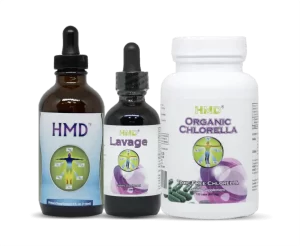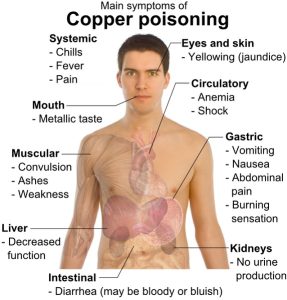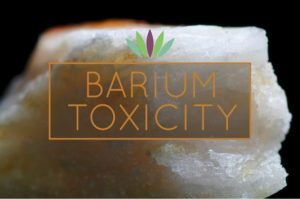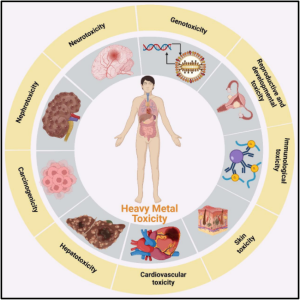
The Science of Heavy Metal Detox
The Science of Heavy Metal Detox Natural Approaches to Cleansing Your Body In our modern world, exposure to heavy metals chlorella detox is practically unavoidable. Whether it’s through the food

 Copper is an essential mineral vital in various physiological processes within the human body.
Copper is an essential mineral vital in various physiological processes within the human body.
It is required for the formation of red blood cells, the function of the nervous system, and the development of connective tissues.
In adequate amounts, heavy metal detox copper is beneficial to our health. However, like many essential minerals, excessive intake or exposure to copper can lead to toxicity, resulting in a range of adverse effects on the body.
In this comprehensive guide, we will delve into the world of copper toxicity, exploring its effects, sources of exposure, common symptoms, potential long-term health consequences, and practical safeguards to protect your well-being.
Before we dive into the intricacies of copper toxicity, let’s begin by understanding the importance of copper in our bodies.
Full body detox kit Copper is an essential trace mineral that plays several crucial roles in the human body. Despite being required in relatively small amounts, copper is vital for various physiological processes. Here are some of the key functions of copper in the body:
Copper is a cofactor for several enzymes, meaning it helps these enzymes function properly. These enzymes are involved in various biochemical reactions, including energy production, antioxidant defense, and the synthesis of important molecules.
Copper plays a central detox pack role in iron metabolism. It is involved in the transport of iron in the bloodstream and helps convert iron into a form that can be used to make hemoglobin, the protein responsible for transporting oxygen in red blood cells.
Copper is essential for forming collagen, a protein that provides structural detox pack support to connective tissues, skin, and blood vessels. Collagen is critical for wound healing and maintaining the integrity of various tissues in the body.
Copper is required to synthesize neurotransmitters, chemical messengers transmitting signals between nerve cells. Proper neurotransmitter function is essential for normal brain and nervous system function.
Copper is a superoxide dismutase (SOD) component, an antioxidant enzyme that helps neutralize harmful free radicals in the body. Free radicals can damage cells and DNA, and copper-containing SOD helps protect against oxidative stress.
Copper plays a role in the function of immune cells, helping to regulate immune responses and protect against infections.
Copper contributes to the formation and maintenance of healthy bones. It is involved in cross-linking collagen fibers in bone tissue, enhancing bone strength.
Copper is necessary for producing melanin, the pigment responsible for the color of hair, skin, and eyes.
Copper is required to form elastin, a protein that gives elasticity to tissues such as skin and blood vessels.
Copper is important for normal brain development, and deficiencies during pregnancy and infancy can have long-lasting effects on cognitive function.
Copper poisoning, also known as copper toxicity or copper overdose, occurs when there is an excessive buildup of copper in the body, either due to high dietary intake, exposure to copper-containing substances, or impaired copper metabolism. This excess copper can overwhelm the body’s natural regulatory mechanisms, leading to various adverse effects.
In the following sections, we will delve deeper into the sources of copper exposure, common symptoms of copper toxicity, and potential long-term health consequences.
Copper exposure can occur through various sources, and understanding these sources is crucial for preventing or mitigating copper toxicity. Let’s explore where copper can be found in our environment and daily lives.
Copper is naturally present in various foods, and a well-balanced diet typically provides adequate copper intake. Here are some dietary sources of copper:
Organic chroella meats, particularly liver, are among the richest sources of copper. Beef liver, in particular, is high in copper.
Shellfish, such as oysters, crab, and lobster, are excellent sources of copper.
Many nuts and seeds contain copper. Examples include cashews, sunflower seeds, and almonds.
Legumes like lentils, chickpeas, and beans are good sources of copper.
Whole grains, such as wheat bran, oats, and barley, provide copper.
Dark chocolate, with a high cocoa content, contains copper.
Some leafy green vegetables, like spinach and kale, contain modest amounts of copper.
Dried fruits contain copper, including raisins and prunes.
Avocado is a fruit that provides a small amount of copper.
Certain varieties of mushrooms, such as shiitake, contain copper.
Poultry, including chicken and turkey, provides copper, although in smaller amounts compared to organ meats and shellfish.
Dairy products like milk, cheese, and yogurt contain copper, but the levels are relatively low.
Beef and lamb are sources of copper, although they contain less copper than organ meats.
Fruits like bananas, oranges, and apples contain trace amounts of copper.
Some beverages, including tea and coffee, contain copper, but the contribution to daily intake is generally minimal.
In areas with copper plumbing, drinking water may contain trace amounts of copper. The level of copper in tap water can vary depending on local plumbing systems.
While these foods provide essential nutrients, excessive consumption of copper-rich items can contribute to elevated copper levels in the body.
Copper supplements best metal detox are available in various forms and are sometimes prescribed to individuals with documented copper deficiencies. However, taking copper supplements without a medical need can lead to excess copper intake and potential toxicity. Certain medications may contain copper, so it’s essential to be aware of their copper content if prescribed.
Copper can also enter the body through environmental exposure. This exposure may occur in several ways:
Copper can leach into drinking water from copper pipes or plumbing fixtures, especially when the water is acidic or sits in pipes for extended periods.
Individuals working in industries where copper is used or processed may be at risk of occupational exposure. These industries include mining, construction, and metalworking.
Copper is used in various consumer products, such as cookware, utensils, and home decorations. While these items are generally considered safe, prolonged or intense contact with copper-containing products can lead to exposure.
Some cosmetics, especially eyeliners and mascaras, may contain copper compounds as colorants. Prolonged or excessive use can contribute to copper exposure.
Unconventional healing practices involving copper or copper-based products may result in copper exposure.
Some rare genetic conditions, such as Wilson’s disease, can disrupt the body’s ability to regulate copper metabolism. Individuals with Wilson’s disease cannot effectively excrete excess copper, leading to copper buildup in the liver and other tissues.
Now that we have explored the sources of copper exposure, it’s essential to recognize the common symptoms of copper toxicity and understand its potential health effects on the body.
Copper toxicity can manifest with a range of acute and chronic symptoms. These symptoms can vary in severity and may affect different body systems. It’s important to note that these symptoms do not necessarily indicate copper toxicity, as they can overlap with other medical conditions. However, seeking medical evaluation and guidance is essential if you suspect copper toxicity or experience these symptoms in conjunction with known copper exposure. Let’s explore some common symptoms associated with copper toxicity:
Excessive copper intake or exposure can irritate the gastrointestinal tract, leading to nausea and vomiting.
Diarrhea is a common gastrointestinal symptom of copper toxicity, often accompanied by abdominal pain or cramping.
Some copper toxicity patients report persistent headaches or migraines.
Chronic fatigue or weakness may occur in cases of copper overload.
Changes in mood, including increased irritability or anxiety, can be associated with copper toxicity.
Hemolytic anemia may develop in severe cases of copper toxicity. This condition results from the destruction of red blood cells and can lead to symptoms such as pallor, weakness, and jaundice (yellowing of the skin and eyes).
Excessive copper accumulation can affect the liver and kidneys, potentially leading to abnormalities in liver function tests or kidney function.
Individuals with Wilson’s disease, a hereditary condition characterized by impaired copper metabolism, may experience neurological and psychiatric symptoms, including tremors, speech difficulties, and personality changes.
In some cases, copper toxicity can result in skin reactions, such as rashes or dermatitis.
Some individuals with copper toxicity have reported an unusual metallic taste in their mouths.
Understanding the potential long-term health effects of copper toxicity is essential for recognizing the importance of prevention and intervention. Even small amounts taken into the body over time will lead to elevated copper levels, which can result in various health consequences, including:
The liver is primarily responsible for metabolizing and excreting copper from the body. Prolonged copper overload can lead to liver damage, potentially progressing to cirrhosis in severe cases.
Excess copper can accumulate in the kidneys, leading to kidney dysfunction. This can manifest as impaired kidney function, increased risk of kidney stones, and other kidney-related issues.
Chronic copper toxicity has been associated with various neurological disorders. These may include cognitive decline, movement disorders (tremors or dystonia), and psychiatric symptoms (depression, anxiety, or mood swings).
Severe copper toxicity can cause hemolytic anemia. In this condition, red blood cells are prematurely destroyed, leading to anemia (a deficiency of red blood cells). Hemolytic anemia can result in symptoms such as pallor, weakness, and jaundice (yellowing of the skin and eyes).
Elevated copper levels can affect connective tissues, potentially leading to joint pain, tendon problems, and skin issues.
Some studies suggest that long-term exposure to copper may be linked to cardiovascular disease, though more research is needed to establish causation.
Preventing copper toxicity involves awareness, responsible dietary choices, and reducing exposure to potential sources of excessive copper. Here are some safeguards you can implement to protect your health:
Copper is undoubtedly an essential mineral that supports various physiological processes in the body. However, maintaining a delicate balance is key to reaping its benefits while avoiding the potential harms of copper toxicity.
By understanding chroella detox the sources of copper exposure, recognizing common symptoms, and being aware of the long-term health effects, you can make informed decisions about your health and well-being.
Stay mindful of your diet, water quality, and the materials you encounter daily. If you suspect copper toxicity or have concerns about potential exposure, do not hesitate to seek medical advice. Your health is a precious asset; safeguarding it involves taking proactive steps to prevent and address potential risks.
In the journey toward well-being, knowledge is your most valuable companion. Stay informed, stay vigilant, and prioritize your health.
If you find that your copper levels are high, taking a natural heavy metal detox, such as HMD, and zinc, can help.

Alkaline Detox Diet best body detox best detox kit best detox supplements best full body detox best heavy metal detox best heavy metal detox for adults best herbal detox best metal detox best thc detox kit body cleanse supplements body detoxification supplements Causes Arsenic Poisoning children and heavy metals chlorella detox Copper Toxicity in Drinking Water detox kit detox pack detox supplements detox tablets Does Sweating Really Release early symptoms of heavy metal toxicity full body detox kit hair mineral analysis heavy metal detox heavy metal detox kit heavy metals detox heavy metals in food Heavy Metals in Makeup Heavy Metals in US Foods HMD Heavy Metal Detox HMD Ultimate Detox Pack Natural Heavy Metal Detox natural supplement for aluminum ORGANIC CHLORELLA pure body detox pure body extra detox Sexual desire in women Sources of Copper Exposure Thallium Poisoning toxic metal detox Toxic metals and sex Toxic metals and women's sexual desire toxic metals in food ultimate detox

The Science of Heavy Metal Detox Natural Approaches to Cleansing Your Body In our modern world, exposure to heavy metals chlorella detox is practically unavoidable. Whether it’s through the food

Barium Toxicity: Sources, Health Effects, and Natural Detoxification Methods Barium is a naturally occurring heavy metal found in various minerals, water sources, and industrial materials. Although barium has certain industrial

How Heavy Metals Are Stored in the Body Their Impact on Health Heavy metals chlorella detox such as lead, mercury, cadmium, arsenic, and aluminum are naturally occurring elements that can
Detoxmetals.com specializes in natural heavy metal detox supplements for eliminating heavy metals naturally from the body.
GMG DA VINCI HEALTH LTD Panayia Aimatousa 300 Aradippou 7101, Larnaca Cyprus
[sibwp_form id=1]
If you’re not receiving an email in your inbox, please check your spam folder. Sometimes legitimate emails can be mistakenly marked as spam. If you find the email there, you can mark it as “Not Spam” to ensure future messages from that sender go to your inbox
